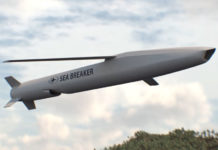For a long time India has been relying on Russian technology for its air defense systems. The Indian Army currently uses locally produced SA-6 missiles, designated Akash, as well as Russian made Tungushka self propelled air defense systems, for its air defense. The Indian Navy also relies heavily on Russian technology with units deployed primarily on its larger vessels. Defexpo 06 provided insight into some of the air defense modernization trends, and showed India’s interest in western technology, including US systems.
Two US companies, Raytheon and Lockheed Martin, provided offerings including a new Patriot PAC-3 version, for which Raytheon can provide “Guided Enhanced Missile Plus” (GEM+)improvements that give it improved acquisition and tracking performance in clutter, and against lower cross-section targets. These improvements enable the Patriot to defeat air breathing targets, cruise missiles and ballistic missile threats when used in combination with standard Patriot PAC-3 missiles.
Another missile promoted here by Raytheon is SLAMRAAM, but they decided not to bid on the Indian Air Force Quick Reaction Missile Air Defense System, a short-range air defense missile competition. The two contenders for this system are RAFAEL’s Spyder SR and MBDA’s Mica VL. Unofficially, it has been reported that the selection process concluded just after the show, in favor of the Israeli Spyder SR. The Indian program initiated much interest in both France and Israel. Since the beginning of the Indian competition the French MoD has issued a request for proposal for both ground and naval Mica VL variants. The Israeli MoD has also become involved in evaluations of the Spyder for use against low level threats and UAVs, and is considering the system as a future replacement for Chaparral and M163 Vulcan. The Spyder system has also evolved since its original presentation to the Indian client, as RAFAEL is now offering a boosted MR version, which is designed to defeat targets at medium ranges.
For the protection of its naval vessels, India has already chosen to proceed with procurement of the Israeli Barak missile, which is already deployed on some of its ships. In February, India and Israel signed an agreement to jointly develop an advanced version of the Barak.
Other naval air defense systems promoted at Defexpo included the Phalanx Close In Weapon System(CIWS), which is now offered in the Block 1B version equipped with radar and thermal imager for target identification and rapid tactical engagement in cluttered littoral environments. Phalanx Block 1B can also be integrated with Raytheon’s Rolling Airframe Missile (RAM), which is already deployed aboard more than 60 ships worldwide. The missile is offered in its SeaRAM configuration, which allows up to 11 missile launchers to be used with the Phalanx system’s sensors. For larger ships, Raytheon is promoting the Standard missile, which is already in use with 16 navies worldwide for the protection of missile cruisers, destroyers and frigates. The missile currently in production is the enhanced SM-2 version, which is being produced in Block IIIA and B versions that are designed to defeat advanced anti-ship threats. The SM-3 is currently under development as the “Navy Theater Wide” (NTW) Tactical Ballistic Missile Defense system. It will be capable of engaging medium and long-range ballistic missile threats. SM-3 will utilize the SM-2 Block IV airframe and propulsion components coupled with a third stage rocket motor, GPS/INS guidance section, and a LEAP kinetic warhead.
Russia’s Almaz is offering a comparable system based on the long range SN-300F “Fort” system, (The export version designation is RIF-M) NATO designation Gargoyle (SA-N-20). A shorter ranged system is the 9K30 M-22 Uragan Air Defense Missile Systems (ADMS). (The export version is the “Shtil-1” (SA-N-7)). The Klinok radar assembly, and Ghibka launchers for firing Igla short-range missile, are also proposed for export.
Among the larger systems being considered by India are the Lockheed Martin/Raytheon Patriot PAC-3, French SAAM (produced by MBDA), Russian S-300 (Antey) and Israeli Arrow, jointly produced by IAI/MLM and Boeing. While India seems to prefer the Israeli system, (New Delhi has already procured the system’s “Green Pine” early warning and fire control radar) the Arrow system is subject to US export approval and no quick decision is expected. Moscow is stepping into this void with by promoting the Almaz S-300 air and missile defense system. The S-300 system is offered for export in two variants, the S-300PMU2 (known as Favorit) and the Antey 2500. India has been interested in developing its missile defense capability for many years, and is especially keen to cooperate or locally produce this capability.












